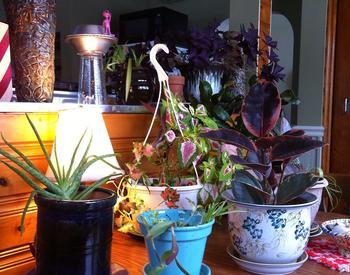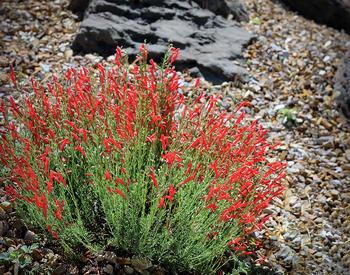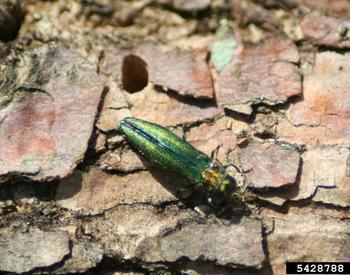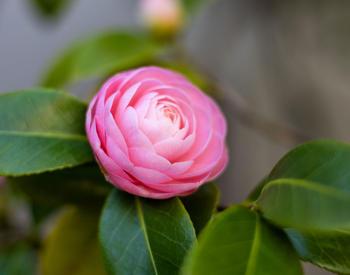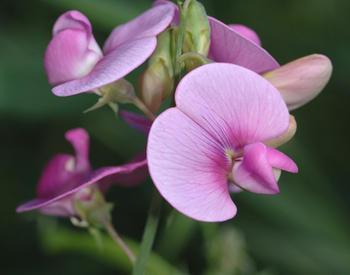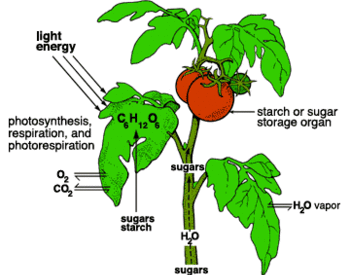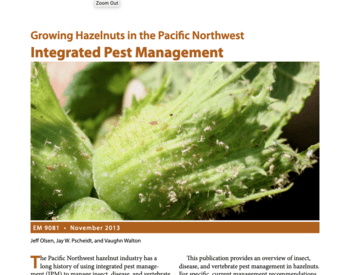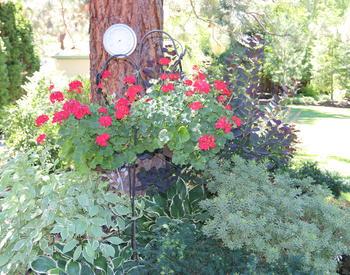CORVALLIS - The fleshy, tender perennial geraniums that grace summer porches are members of the geranium family in the genus “Pelargonium.” The smaller, wild hardy geraniums common to North America and Europe are in the genus “Geranium.”
Ever-popular Pelargoniums are native to South Africa. Several varieties have made their way into the nursery trade, including the familiar, flashy varieties, the scented geraniums and in the last few years, geraniums with colorful leaves.
Major groups of common Pelargonium geraniums include:
Common garden geraniums, also called “zonal” geraniums - Sold as bedding plants, they are compact in habit and often have fancy leaves marked by distinct bands - or zones - of darker pigments, tri-colored leaves or leaves with silver or white markings. Flowers may be single or double, are clustered into heads, and may range from red, pink, salmon and white.
Lady, regal or Martha Washington geraniums – We are lucky here in the Pacific Northwest that these beautiful large flowered types thrive here. They require cool (50 to 60 degree) night temperatures in order to bloom. They don’t do well in climates where evenings are warm, such as the Midwest.
Ivy-Leaved geraniums – These have vine like growth and smooth, leathery leaves and flowers with narrower petals. They are popular in Europe, often planted in window boxes. These look good in hanging baskets.
Scented-leaf geraniums – Plants have a wide range of leaf shapes and are used for making potpourris, sachets and tea flavorings. They make excellent houseplants, and many have soft, finely textured foliage and small flowers. Scents include rose, lemon, nutmeg, apple and peppermint.
When shopping for any of these types of tender geraniums, Oregon State University Extension Service experts recommend that you look for healthy leaves, with no discolored spots above or underneath; fairly compact growth with no straggly stems that indicate it was grown in poor light; and no obvious pests.
Geraniums need at least six hours of full sun each day for best growth and flowering. Protect from freezing temperatures. In the hottest part of the summer, they do better in afternoon shade. Out in the garden, space plants eight to 12 inches apart in rich garden soil. Fertilize every two weeks, and water when soil feels dry to a depth of 2 inches. Remove old flowers to keep plants looking fresh.
They also perform well in containers on decks, patios, porches, and along walks.
If you don’t have a garden site in full sun, you can still enjoy the plants. You’ll just have to move your potted plants around occasionally to get the benefit of whatever sun you do have.
Select a container that has drainage holes in the bottom or sides. Plant them in an ultra light weight potting mix, with plenty of vermiculite so you’ll have an easy time changing the positions of containers. Geraniums need good drainage. Avoid using a saucer under the container. Allow water to fully drain from the pot.
Geraniums can be trained into standards, or tree forms, if you like. Ivy geraniums with their cascading habit are naturals for hanging containers.
With relatively few pests, geraniums can fall prey to a few diseases, such as Botrytis, a fungus that occurs when days are warm but nights are cool enough to create dew. Diseased blossoms will look moldy, turning brown and mushy. It spreads quickly, so remove and discard affected blooms or plants.
Look out for geranium budworm, a tiny caterpillar that destroys the bud from within. The best treatment is to handpick the eggs and worms. Check for budworms daily.
There are several ways to over winter or keep your geraniums. Either take cuttings in the fall and keep the small, potted plants on a windowsill with a bright, sunny southern exposure during the winter. Or, dig them from the garden before the first frost and plant them in pots large enough to accommodate the roots. Cut the plant back to 6 inches tall, and place in a sunny area such as a heated porch.
An old-fashioned method of over wintering geraniums is to dig the plants before the first frost, knock the soil from their roots, and hang the plants upside down in a cool, moist basement with 80 percent humidity and temperatures between 35 to 45 degrees. If plants begin to dry out, soak the roots in water a few times each winter. In spring, take the plants down, cut off half to three-fourths of the top growth, and replant outdoors.
If your geraniums are diseased or are infested with pests, it is best to trash them and start over with new, healthy starts next year.


